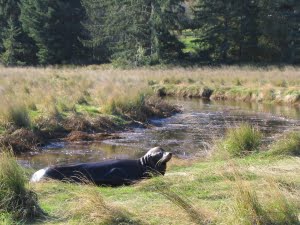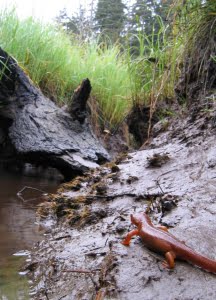
The Estuary Technical Group’s mapping methods go national
By Laura Brophy
August 2020
Estuaries provide rich sustenance for salmon, other fish and wildlife -- and for people. Over the past 6 years, Estuary Technical Group (ETG) Director Laura Brophy, pictured above, has led the development of innovative, accurate methods for mapping these vital estuary habitats in Oregon and across the U.S. West Coast. Now, she's a core member of a team that is taking these new mapping methods national.
The new project is funded by the National Oceanic and Atmospheric Administration (NOAA) through the National Estuarine Research Reserve system (NERRS). It's led by Elkhorn Slough NERR near Watsonville, California, and all 29 NERRs will be involved in testing the mapping methods across the U.S.
The foundation for this project was laid in 2014, when Laura and former ETG staffer Michael Ewald partnered with the Oregon Coastal Management Program to produce the nation's first statewide, elevation-based maps of estuary habitats. Laura then worked with the Pacific Marine and Estuarine Fish Habitat Partnership (PMEP) to apply the new methods to the whole U.S. West Coast. The resulting maps gave the ETG/PMEP team the means to produce the first comprehensive spatial data on estuarine wetland loss for the West Coast.
In the new nationwide project, Laura and her team will use the elevation-based estuary maps, along with other historical and current data, to build a better understanding of change in our nation's estuaries. The results will be used to inform restoration and conservation priorities at each study estuary – and to improve consistency of estuarine habitat mapping across our country's coastlines.
Read Laura's tidal wetland research published in the journal PLOS One.
Restoration
Research
Education
Get Involved
Contact
Main Office:
4950 SW Hout Street
Corvallis, OR 97333-9598
541-753-3099
[email protected]
Southwest Office:
1850 Old Pecos Trail, Suite I
Santa Fe, NM 87505
[email protected]
© 2024 Institute for Applied Ecology | Privacy Policy



